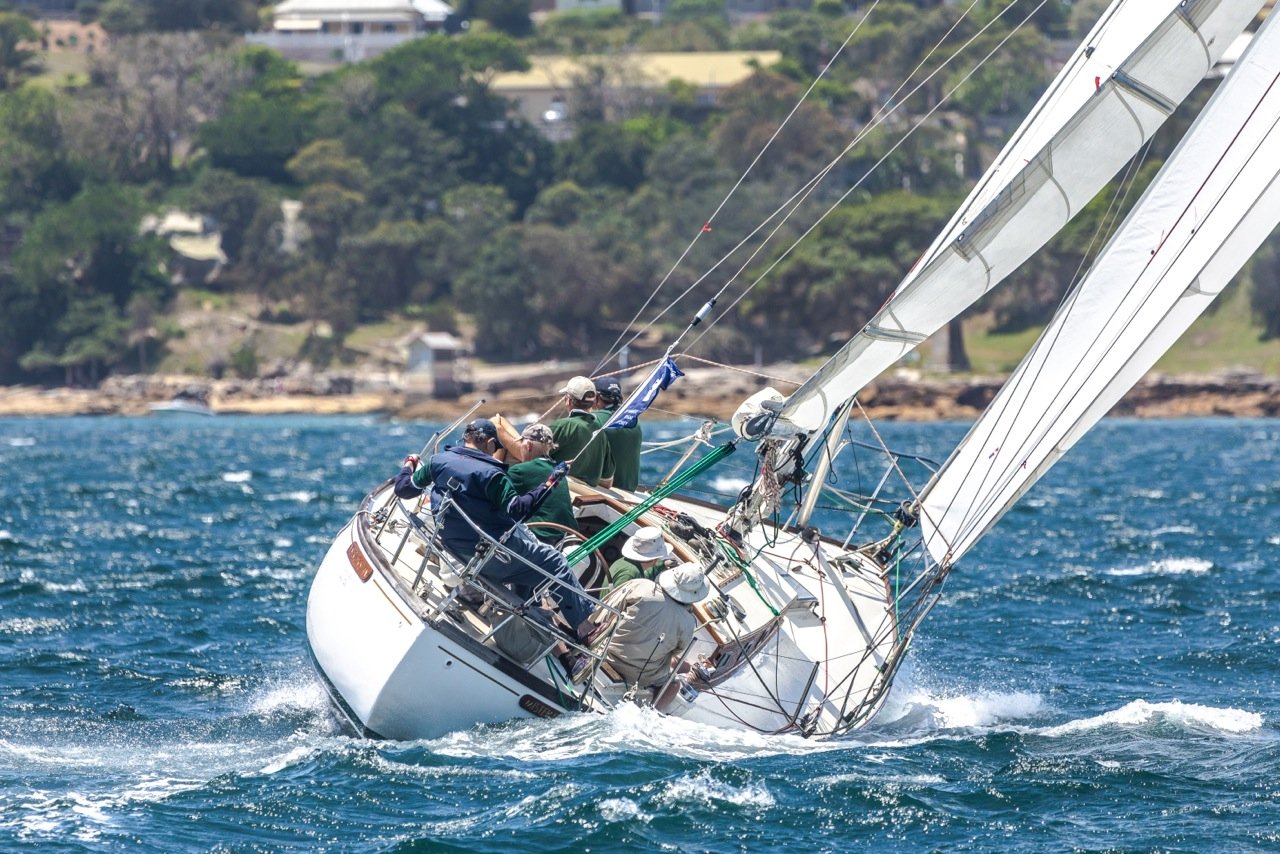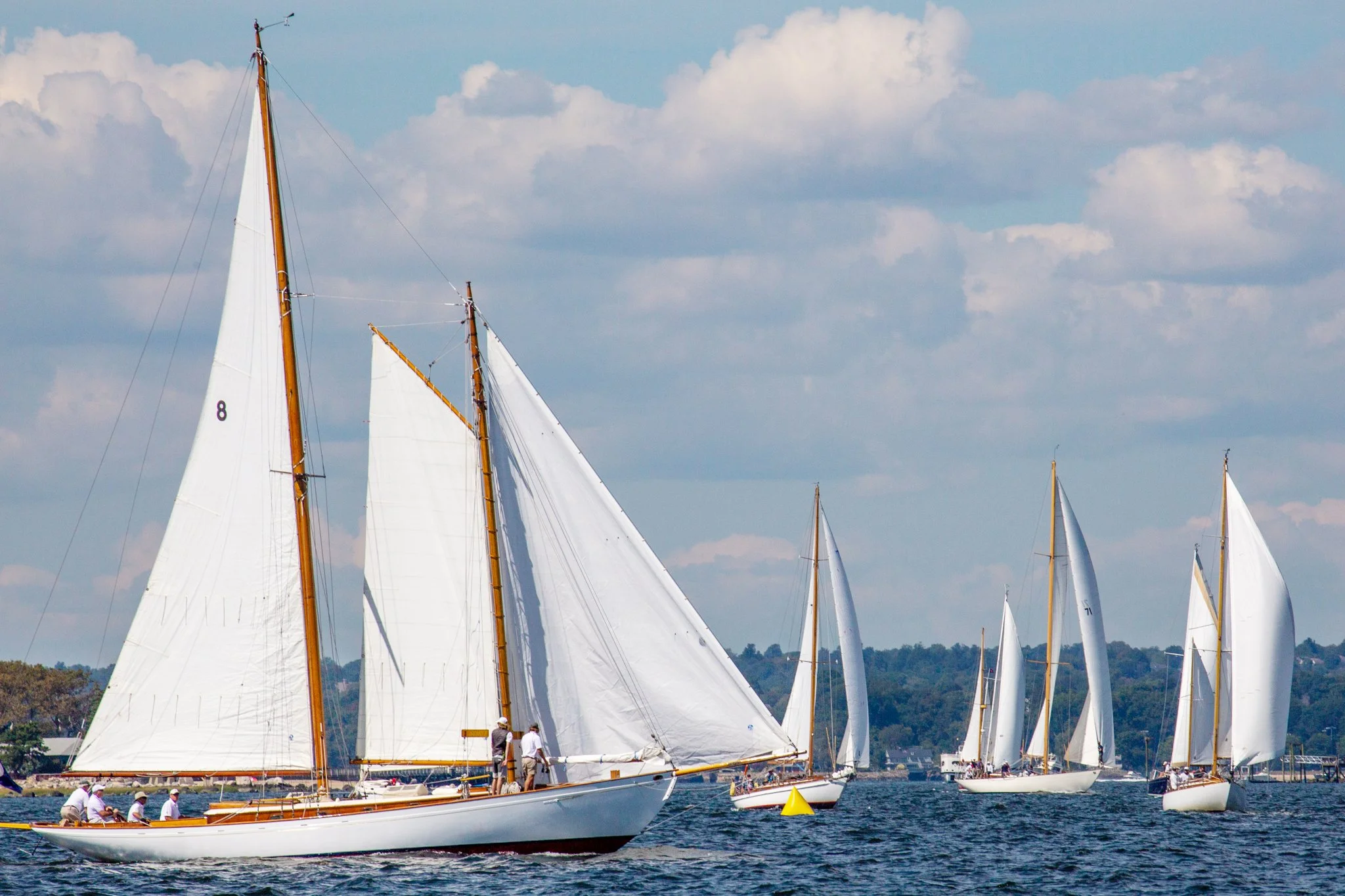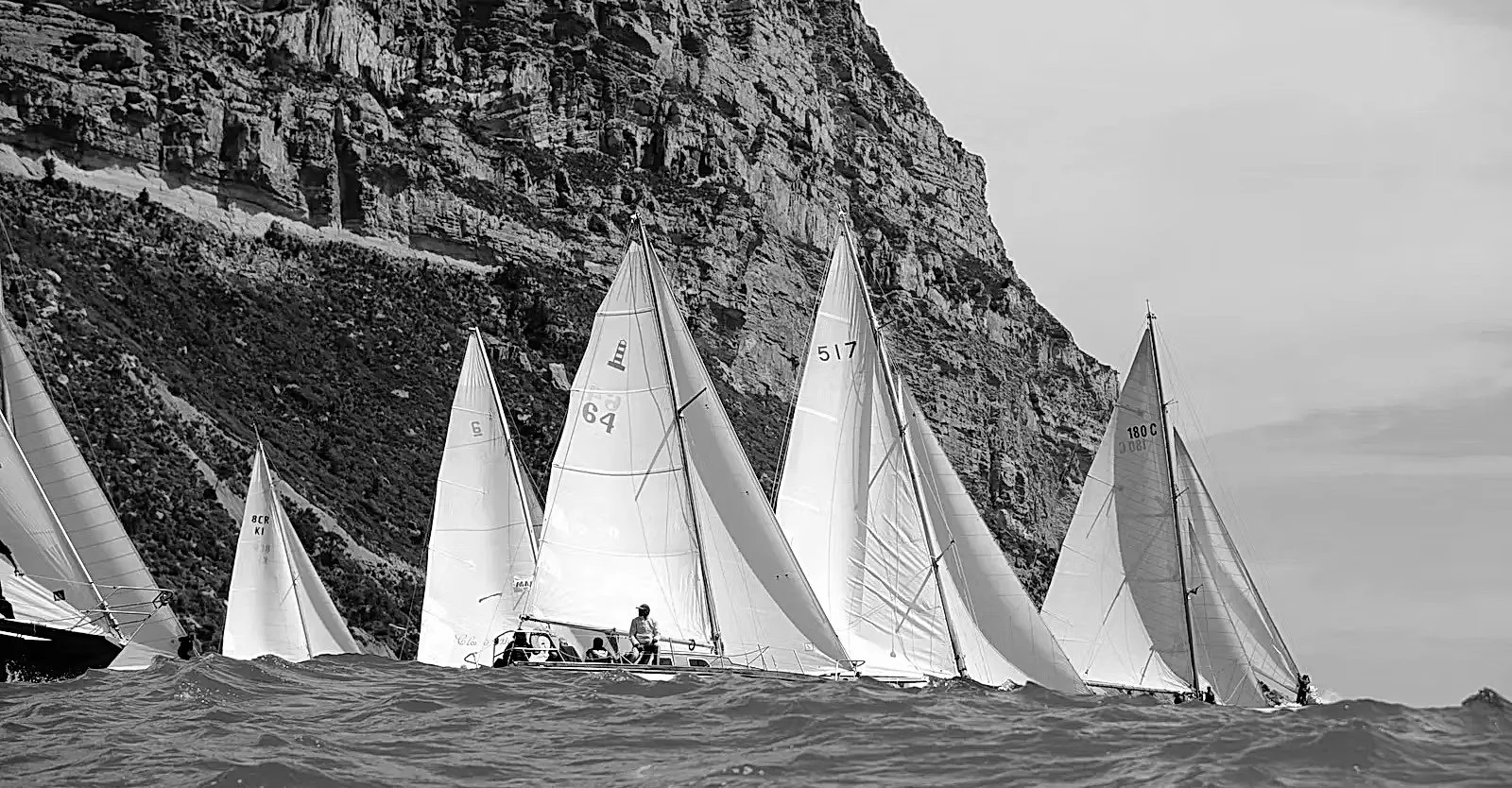Means of Measuring
Last weeks editorial prompted the letter below from non other than David Salter the custodian of Mister Christian . David is an experienced offshore sailor who has competed in 12 Sydney-Hobart races. He is also an independent journalist and TV producer. His opinions are to be respected!
Dear SWS,
The short editorial at the head of this week's edition does not include a "Comment" button, so I am sending these thoughts to this address.
Any proposal to enhance the elusive goal of "fairness" in handicapping yachts should be considered with an open mind, but it must first be practical. A measurement-based system for classics - however detailed it might be - could never encompass the huge variety of individual physical characteristics within a fleet, let alone derive a reliable index of performance differentials between those differences.
To give just a few examples. What would the rating gap be between gaff-rigged or Bermudian yachts? Between the use of Dacron or carbon sails? Between keel-hung, spade or transom-hung rudders? It is this wonderful individuality of classic yachts that contributes so much of their appeal. The only sensible way to measure their relative speed potential is to collect data on their time-on-distance racing results. In other words, a performance handicap system.
The proposition that a measurement-based regime would encourage owners to better maintain or upgrade their yachts is illogical. Any classic yacht that races regularly will already be adequately maintained. Upgrades would add to a handicap, which is hardly encouraging. Inevitably, this would soon lead to the rise of an optimisation scramble lead by the professional "rating whisperers" who have become such a blight on IRC racing.
The primary object of any handicapping system is to give every yacht in the fleet a fair chance of winning. Under PHS - which adjusts from race to race - the better you sail the harder it gets to achieve podium results. What could be fairer than that?
David Salter
Mister Christian A16
In case you missed it, this was in response to the this paragraph in the SWS weekly email…
Amongst the Classic Racing fleets here in Australia there seems to be continual push back against a measurement handicapping system. The reasons touted range from “too expensive” to “the fleets are too diverse” to “it’s a hassle to weigh and measure”. And yes there are some negatives. But perhaps we should consider the up side.
Providing fairer competition might only be the secondary motivation. The primary reason, would be to sail under a system that rewards boat owners for maintaining and upgrading their craft, rather than the current ubiquitous performance handicapping that promotes mediocrity. The worse condition your boat is in… the better your handicap!
Point taken David. But we still have to recognise that all the countries with bigger, more active and better maintaned Classic Yacht Fleets than our own, when they get serious, race under a measurement handicap system. Without wanting to confuse correlation and causation, this is surely more than a co-incidence.
Some examples
Classic Yacht Owners Association of America
While the longer-term goal of CYOA is to be an inclusive community that provides value for owners of all types of classic yachts, the short-term focus has been on increasing participation in and enjoyment of classic yacht regattas in New England. To that end, in collaboration with our leadership, members and regatta organizers, we’ve developed the guidelines designed to help improve and bring an increased level of consistency to the overall competitor experience.
India Harbor Classic Regatta conducted under CRF
The British Classic Yacht Club
The raison d'etre of the British Classic Yacht Club is its fleet of beautiful yachts built in traditional materials, on classic lines, to unique or limited production designs. It aims to promote the ownership, knowledge and appreciation of classic yachts and to preserve the enjoyment of them for future generations.
Many of the most beautiful classic yachts were produced as one-designs or very small groups of sister yachts. They have not enjoyed the support of class associations and no club has responsibility for advancing the interests of this historic fleet of boats, the British Classic Yacht Club was formed in 2001 to fill this gap.
The BCYC fulfils its aims by providing a congenial environment for owners and other classic yacht enthusiasts to share experiences and enjoy each other's company, thus developing close, personal relationships between people involved with these beautiful boats. It creates opportunities for cruising in company, organises fair and exciting racing and promotes efficient development of the yachts. It also runs a lively programme of social events.
The membership of the BCYC now consists of more than 80 beautiful classic yachts. Our members are active in both cruising and racing.
The flagship event is the highly successful annual regatta British Classic Week, held in Cowes each July. This is now the key Classic event of the British yachting season.
British Classic Week
The Mediteranean.
For the most spectacular Classic Fleet in the world the measurement system chosen is specifically designed for the fleet. The CIM handicapping system is acknowledged to be complex and costly, but it encourages excellence in boat maintenance and restoration. The system assigns handicaps based on the boat’s physical characteristics AND performance in previous races. To succeed in CIM, a boat needs to be well-maintained, restored authentically to its original design, and sailed well. Events Using CIM include Les Voiles de Saint-Tropez, Régates Royales Cannes, Argentario Sailing Week, Vele d’Epoca di Imperia, Puig Vela Clàssica Barcelona
Racing under CIM
Join the conversation in the comments section below.




